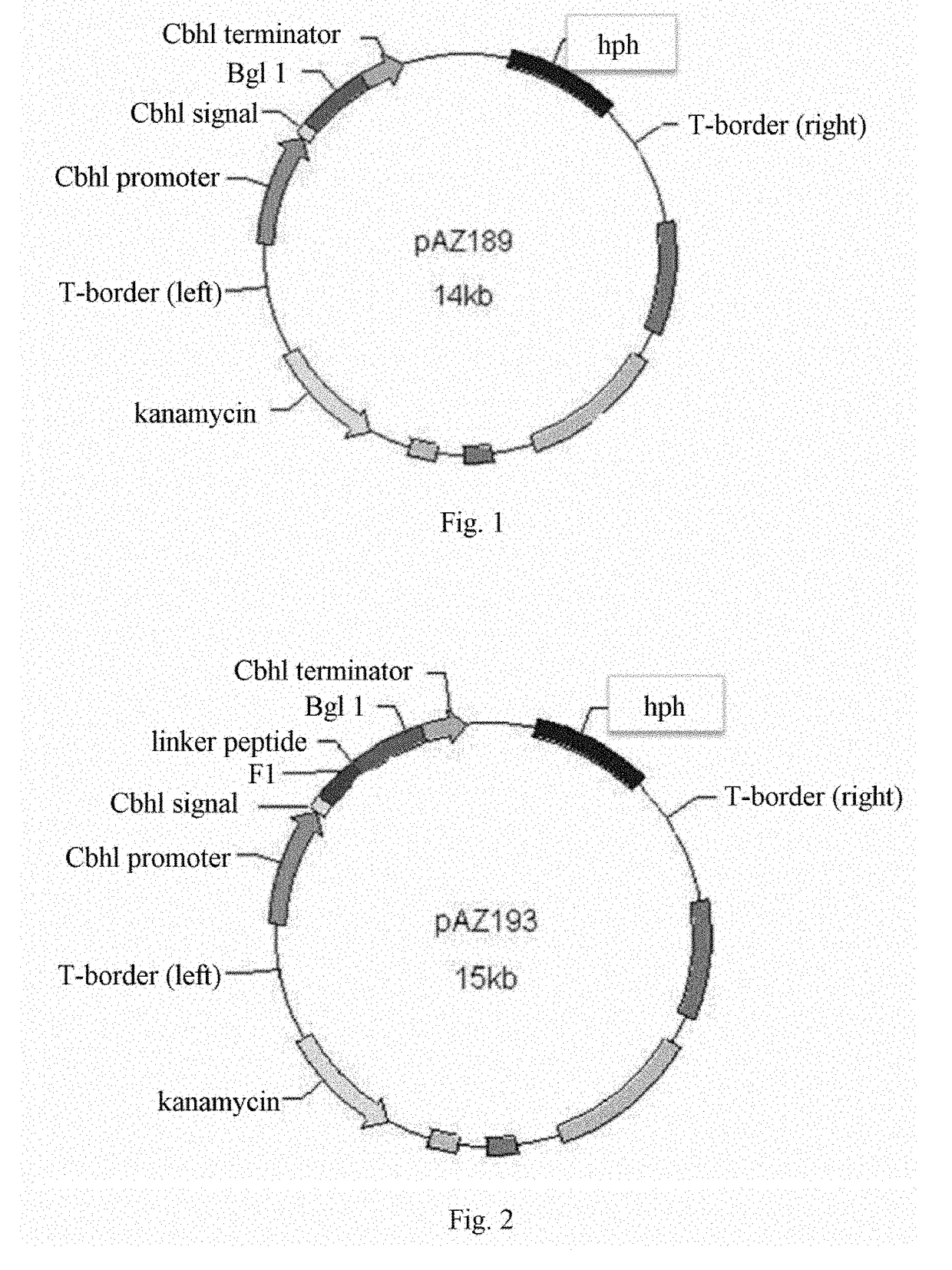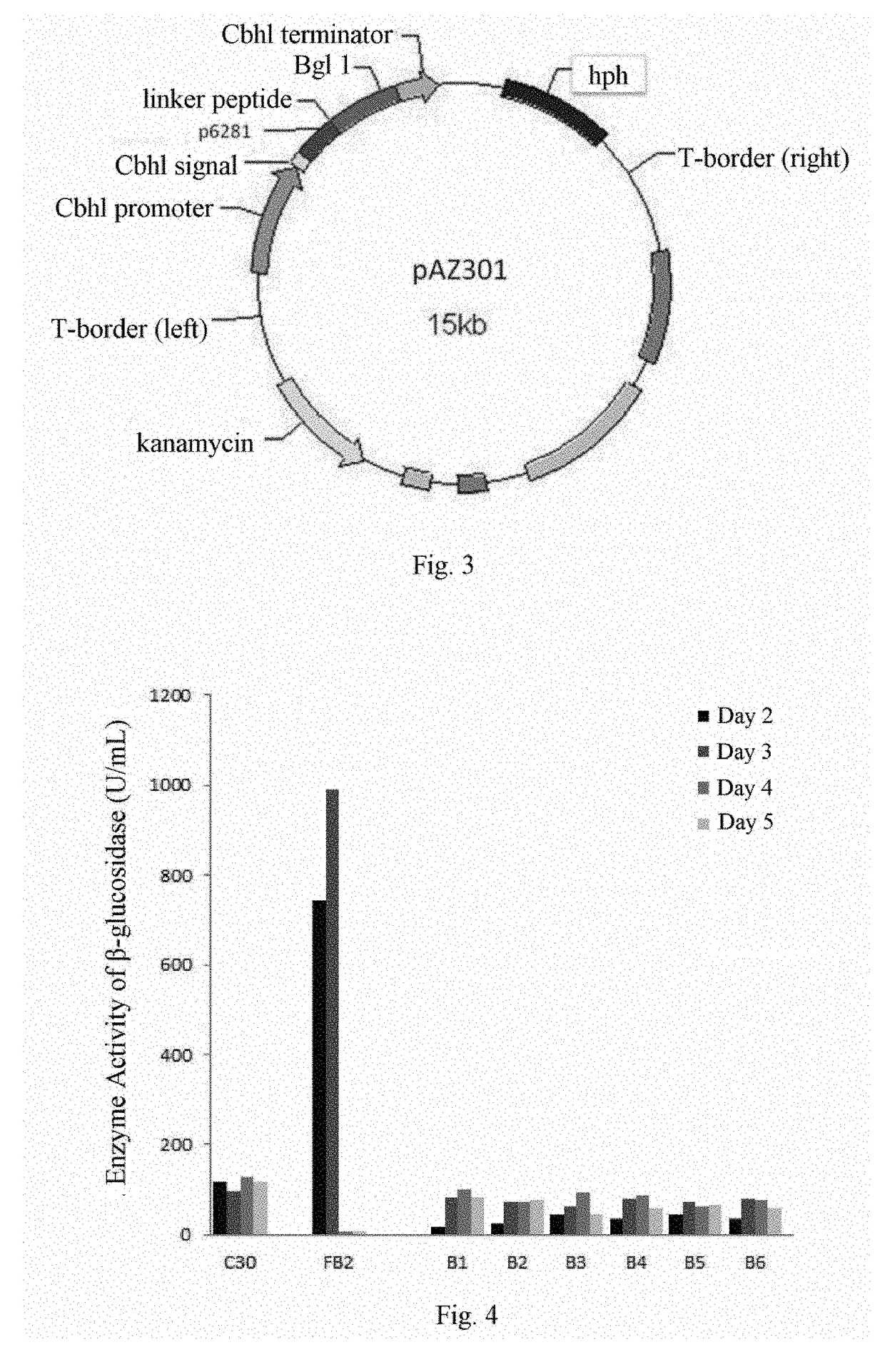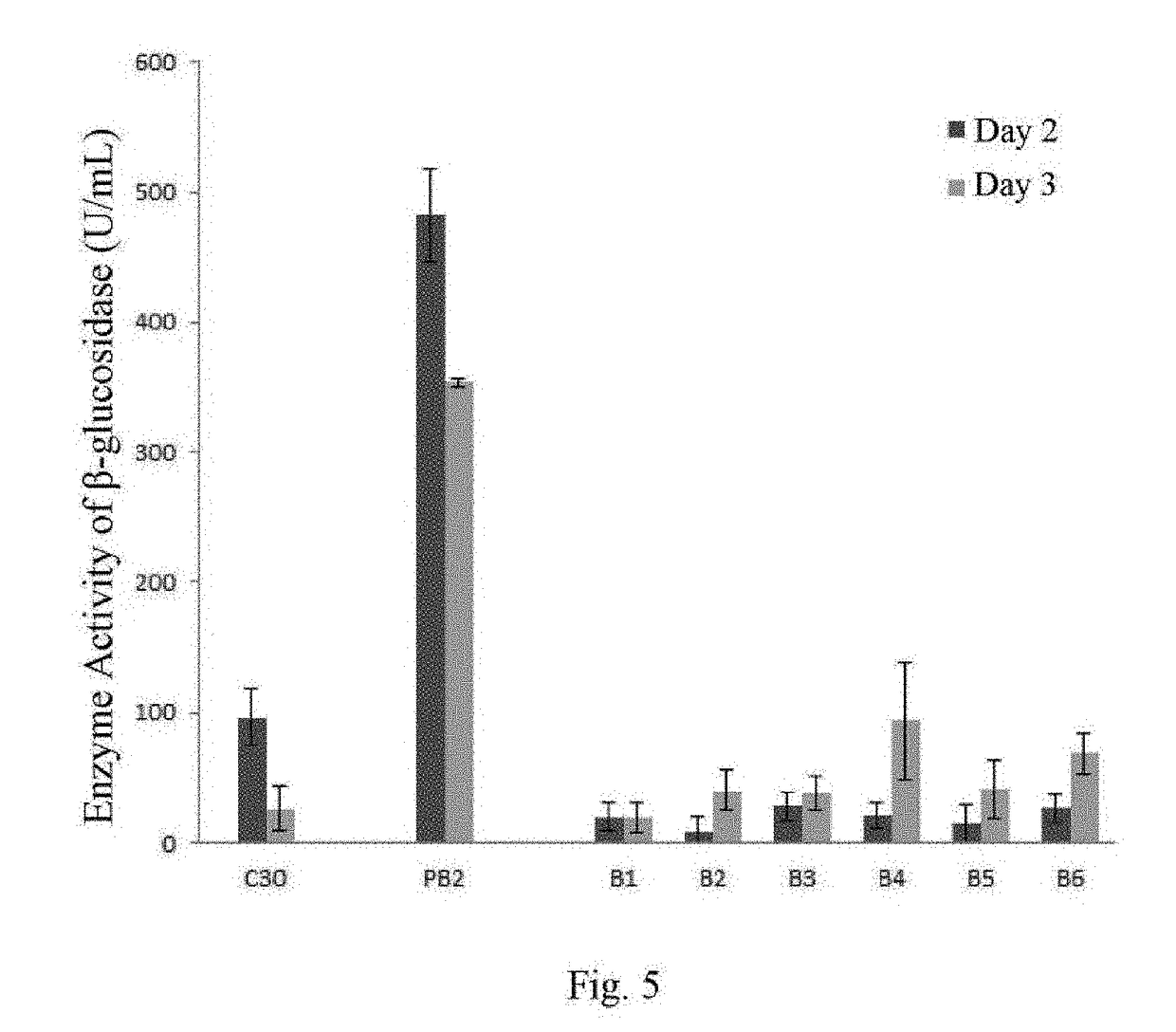Methods for recombinant expression of beta-glucosidase gene
a beta-glucosidase and recombinant technology, applied in the field of biotechnology and fermentation, can solve the problems of low -glucosidase content, significant loss of -glucosidase activity, limited hydrolysis process of cellulose, etc., to shorten the period of enzyme production, and improve the yield of -glucosidase enzym
- Summary
- Abstract
- Description
- Claims
- Application Information
AI Technical Summary
Benefits of technology
Problems solved by technology
Method used
Image
Examples
example 2
Sources of the Sequence Fragment Encoding the Aspartic Protease
[0132]The encoding sequences of the aspartic protease for construction of the fusion protein expression vector are respectively as follows: (1) sequence F1, synthesized by Sangon Bioengineering (Shanghai) Ltd., having 99% identity with the p6281 gene in the NCBI database; (2) p6281 gene from the NCBI database, synthesized by Sangon Bioengineering (Shanghai) Ltd.
Example 3 Construction of Expression Vector pAZ189 of Trichoderma reesei β-Glucosidase Gene
[0133]Following the method described in “Molecular Cloning, A Laboratory Manual” (third edition, Academic Press, 2002, [US] edited by J. Sambrook, et. al., and translated by Peitang HUANG), based on pCambia1300 (purchased from Invitrogen), CbhI promoter (SEQ ID NO: 1), CbhI signal peptide coding sequence (SEQ ID NO: 2), Bgl1 gene (SEQ ID NO: 5) and CbhI terminator (SEQ ID NO: 6) were sequentially inserted into the multiple cloning site to construct the expression vector pAZ1...
PUM
| Property | Measurement | Unit |
|---|---|---|
| pH | aaaaa | aaaaa |
| pH | aaaaa | aaaaa |
| β-glucosidase activity | aaaaa | aaaaa |
Abstract
Description
Claims
Application Information
 Login to View More
Login to View More - R&D
- Intellectual Property
- Life Sciences
- Materials
- Tech Scout
- Unparalleled Data Quality
- Higher Quality Content
- 60% Fewer Hallucinations
Browse by: Latest US Patents, China's latest patents, Technical Efficacy Thesaurus, Application Domain, Technology Topic, Popular Technical Reports.
© 2025 PatSnap. All rights reserved.Legal|Privacy policy|Modern Slavery Act Transparency Statement|Sitemap|About US| Contact US: help@patsnap.com



